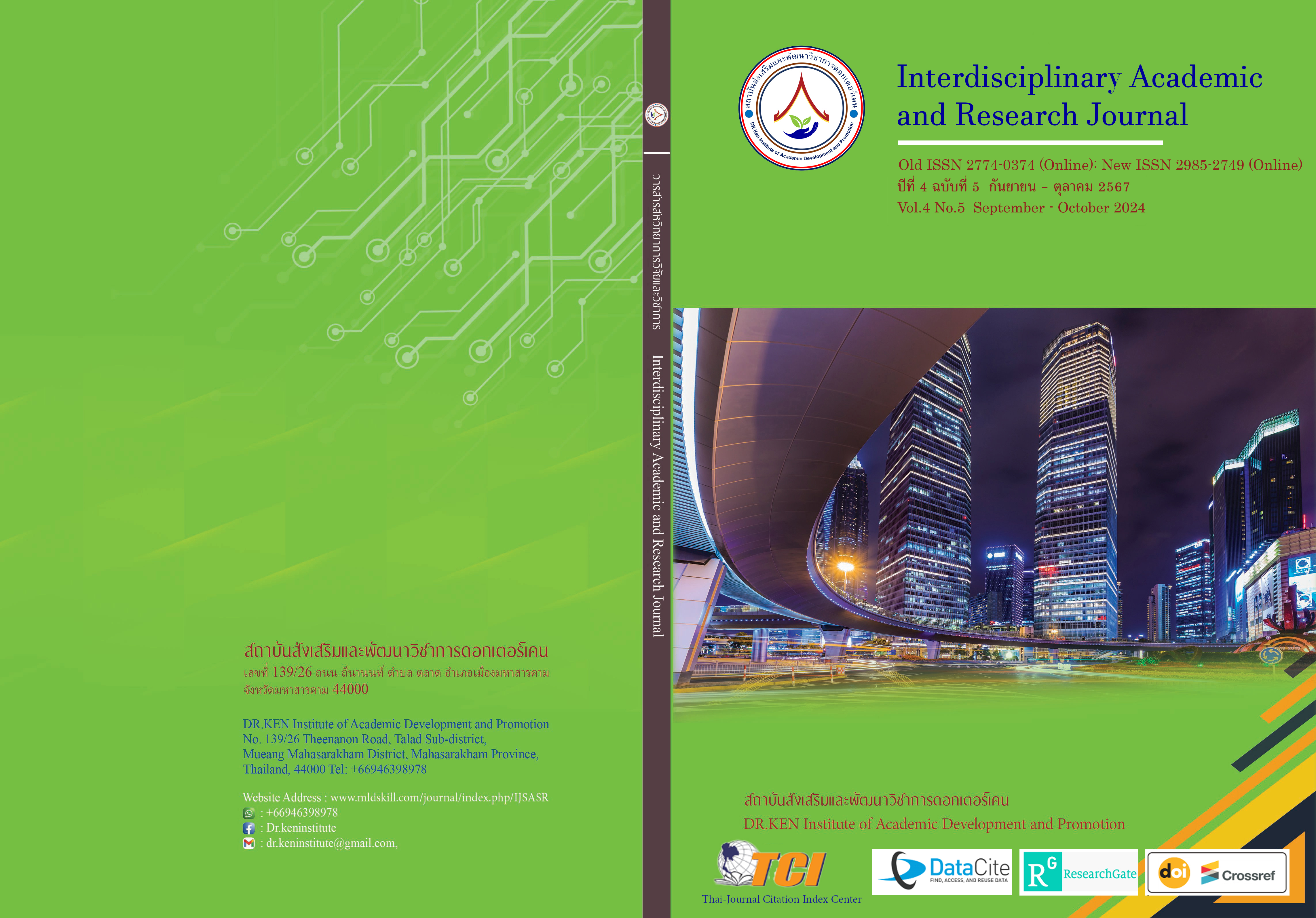School Administration in the Learning Promotion of Digital-era Teachers
DOI:
https://doi.org/10.60027/iarj.2024.279462Keywords:
School Administration; , Teachers’ Learning; , Digital EraAbstract
Background and Aims: Through the provision of necessary resources, training, and support for integrating technology into the classroom, school administration plays a critical role in supporting the learning of teachers in the digital age. A collaborative atmosphere that supports ongoing professional development and cutting-edge teaching techniques is another benefit of effective administration. Thus, this article presents the school administration in the learning promotion of digital-era teachers. This is an era where technology is an important part of daily life and impacts every aspect of learning. School administration must continually adapt to the changes that occur, and the teachers and students must have appropriate support to be able to use technology in learning appropriately and efficiently. School administration is in this era, so there are challenges, the administrator must therefore be alert and adapt to the times.
Methodology: This article is a documentary study and uses content analysis to analyze data.
Results: School administration that promotes teacher learning in the digital age in the form of the UL BEST Model is a model used in designing and developing learning in educational institutions. It focuses on creating a learning environment that supports the development of skills and knowledge suitable for students in today's era of rapid change with technology and social change. The main components of the UL BEST model include; 1) Understanding, 2) Learning, 3) Behavior, 4) Environment, 5) Support, 6) Teamwork & Working together, which is the school administration that promotes digital teacher learning by creating a modern learning environment that is appropriate for students in an era of rapid change with technology and social change. And focus on developing the skills necessary for adapting and preparing to work in different societies and situations in the future.
Conclusion: By creating a contemporary, encouraging, and collaborative learning environment, school administration that makes use of the UL BEST Model successfully supports digital teacher learning. This methodology provides educators and learners with the fundamental abilities and understanding required to prosper in the face of swift advancements in technology and society.
References
เกียรติศักดิ์ ลําพองชาติ. (2563). ทักษะการทํางานในโลกยุคดิจิทัล. กรุงเทพฯ: สํานักงานเลขาธิการวุฒิสภา.
จิติมา วรรณศรี. (2564). การบริหารจัดการศึกษายุคดิจิทัล. พิษณุโลก: รัตนสุวรรณการพิมพ์.
ไพฑูรย์ สินลารัตน์ และคณะ. (2560). การศึกษา 4.0 เป็นยิ่งกว่าการศึกษา (พิมพ์ครั้งที่ 4). กรุงเทพฯ: จุฬาลงกรณ์มหาวิทยาลัย.
วิจารณ์ พานิช. (2557). วิถีสร้างการเรียนรู้เพื่อศิษย์ (พิมพ์ครั้งที่ 3). กรุงเทพฯ: ตถาตาพับลิเคชั่น.
ศศิรดา แพงไทย. (2559). บทบาทของผู้บริหารสถานศึกษาในศตวรรษที่ 21. วารสารวิทยาลัยบัณฑิตเอเชีย, 6(1), 7-11.
สถาบันอุทยานการเรียนรู้. (2567). 10 เทรนด์การเรียนรู้ที่เกิดขึ้น. Retrieved from: https://www.okmd.or.th/knowledgebox/ 163/1314/
สุกัญญา แช่มช้อย. (2560). การบริหารสถานศึกษาในยุคดิจิทัล. พิษณุโลก: พิษณุโลกดอทคอม.
เอกชัย กี่สุขพันธ์. (2567). การบริหารสถานศึกษายุคดิจิทัล. Retrieved from: https://www.trueplookpanya.com/ education/content/52232
Baglama, B., Evcimen, E., Altinay, F., Sharma, R. C., Tlili, A., Altinay, Z., & Celebi, M. (2022). Analysis of digital leadership in school management and accessibility of animation-designed game-based learning for sustainability of education for children with special needs. Sustainability, 14, 1-12.
Marc, P. (2010). Educational Technology for School Leaders. California: A SAGE.
Napate, S., Maity, P., & Baheti, P. (2020). Digital transformation of management education. American International Journal of Business Management (AIJBM). 3 (9),19-23.
Downloads
Published
How to Cite
Issue
Section
License
Copyright (c) 2024 Interdisciplinary Academic and Research Journal

This work is licensed under a Creative Commons Attribution-NonCommercial-NoDerivatives 4.0 International License.
Copyright on any article in the Interdisciplinary Academic and Research Journal is retained by the author(s) under the under the Creative Commons Attribution-NonCommercial-NoDerivatives 4.0 International License. Permission to use text, content, images, etc. of publication. Any user to read, download, copy, distribute, print, search, or link to the full texts of articles, crawl them for indexing, pass them as data to software, or use them for any other lawful purpose. But do not use it for commercial use or with the intent to benefit any business.
















.png)


